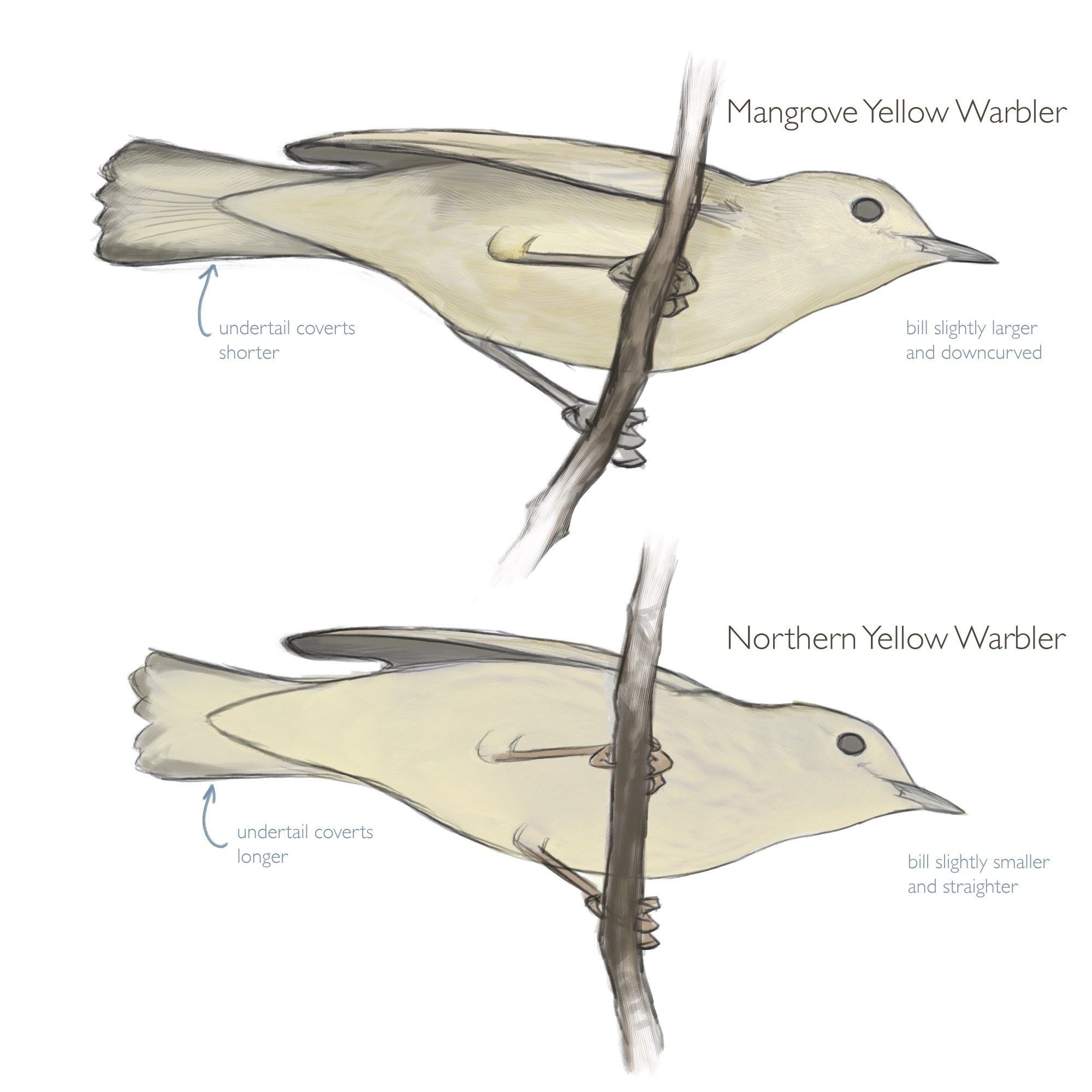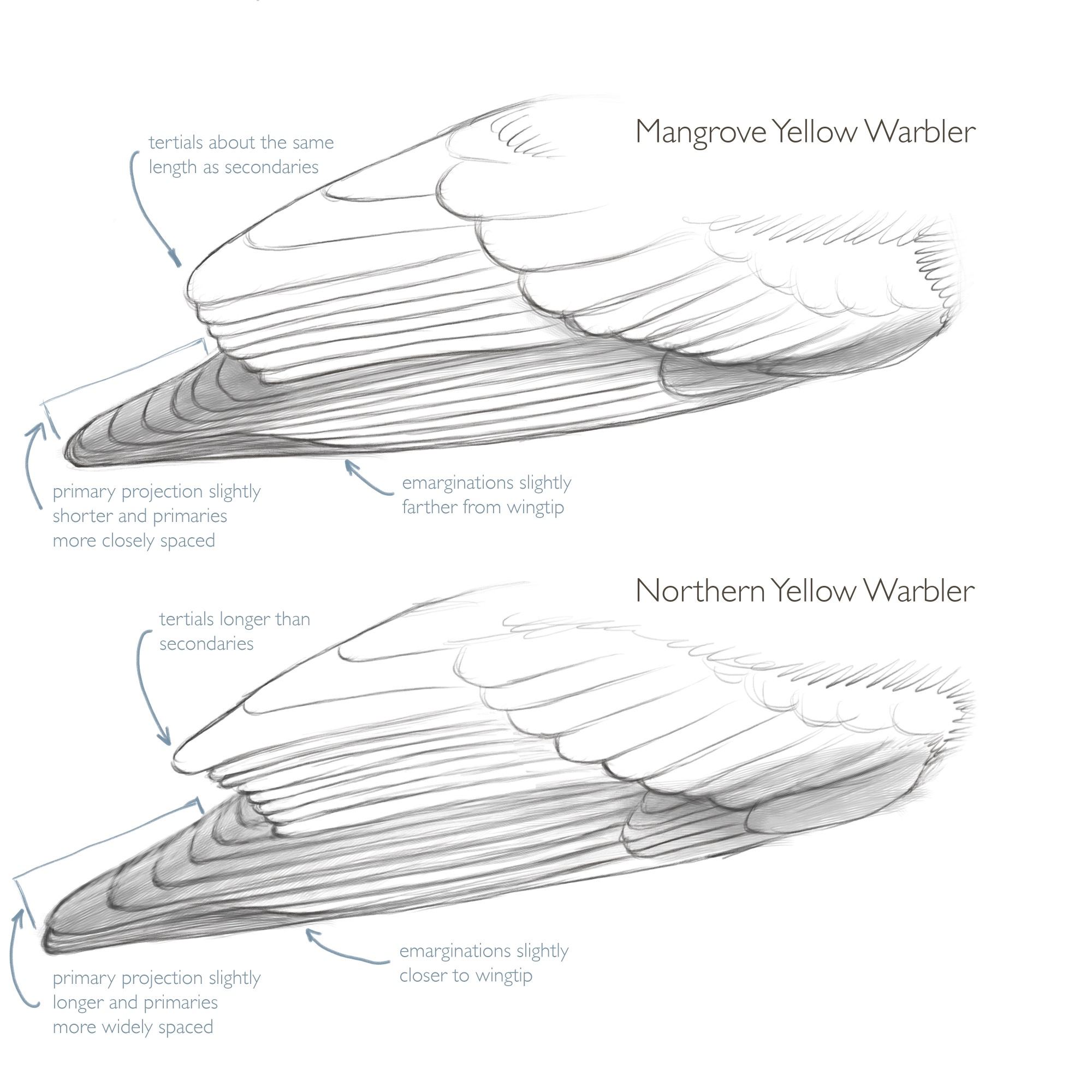The split of Yellow Warbler into two species in 2025 (by eBird) brings a challenging identification issue into the mainstream. It is possible to identify most by plumage color (more details coming soon), but differences in the shape of body, wings, and bill provide more consistent clues for identification.

- Northern undertail coverts longer and fuller, which contributes to an overall more streamlined and torpedo-shaped body
- Northern bill averages smaller and straighter, Mangrove larger and slightly downcurved

- Northern wings slightly longer, narrower, and more pointed, which is visible in longer primary projection, emarginations closer to wingtip, and secondaries shorter than tertials.
Differences in structure are mostly related to the migratory behavior of the two species. Northern Yellow Warbler is highly migratory, with some populations nesting near the Arctic Circle and wintering in South America, and it has evolved long, narrow wings and a more streamlined body shape for efficient long-distance flight. Mangrove Yellow Warbler is resident in its tropical mangrove habitat, with shorter and more rounded wings and less streamlined body, adapted for short flights.
Males of the Mexican group of Mangrove Yellow Warbler (found in southern Texas) are easily identified by their dark rufous head. Identifying others by plumage color is more difficult, and requires assessing subtle plumage differences across a wide range of variation of age, sex, and subspecies. Most can be identified by plumage, but structural differences are more constant and will always be important to confirm an identification.
Across nearly all of North America only Northern Yellow Warbler is expected, and any Yellow Warblers can be identified as Northern simply by range. In the places where Mangrove Yellow Warbler occurs – in mangrove habitat in the Florida Keys and extreme southern Texas – both species can be found and require more active identification. Northern Yellow Warbler is a common migrant and rare winter visitor in those places, and can be found alongside Mangrove Yellow Warbler for most of the year, from July to May.
There are a few records of vagrant Mangrove Yellow Warblers hundreds of miles from their normal range, and the potential for range expansion, so it is worthwhile to keep an open mind to the possibility of out-of-range Mangrove Yellow Warblers.
Differences between these two species are subtle and variable, and require good views and some experience to judge them correctly. Some individuals will be ambiguous even with detailed study, but a combination of plumage and structural details should allow confident identification of most.

